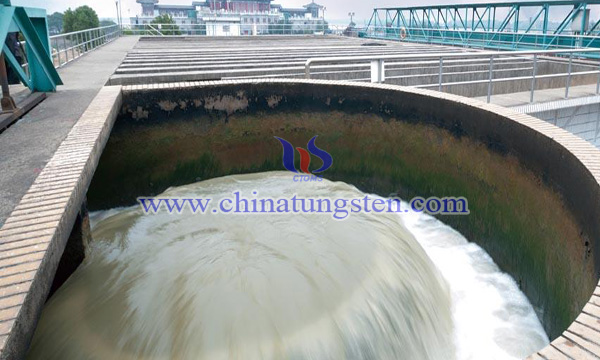Boron Nitride - Bismuth Tungstate Composite Photocatalyst Preparation Process
- Details
- Category: Tungsten Information
- Published on Sunday, 04 August 2019 20:15
Photocatalysis is a technology that uses the light energy existing in nature to convert into the energy needed for chemical reaction to produce catalytic effect. By this way, it can decompose organic substances harmful to human body and environment without causing waste of resources and formation of additional pollution. A large number of studies have shown that almost all organic pollutants can be effectively photocatalytically degraded.

In the process of textile printing and dyeing, a lot of auxiliaries which pollute the environment and are harmful to human body are used. Most of these auxiliaries are discharged in liquid form and inevitably enter the water environment. This kind of wastewater has deep color, high content of organic pollutants, poor biodegradability, and seriously endangers the water environment and human health.
Many scholars have made great efforts to improve the specific surface area of bismuth tungstate materials. Composite modification of materials is the most useful method. For example, the preparation of boron nitride and bismuth tungstate by composite method needs to go through:
(1)Carbon decaborane was dissolved in tetrahydrofuran to obtain tetrahydrofuran solution with concentration of 0.05 mol/L.
(2)Bismuth nitrate pentahydrate and sodium tungstate dihydrate were dissolved in ethylene glycol to obtain Bismuth tungstate precursor solution; Bismuth acid precursor solution was added into the tetrahydrofuran solution of decaborane obtained by step (1) under magnetic stirring, mixed evenly, then added 4,4'-bipyridine, stirred by magnetic force for 30 to 60 minutes, and the mixed solution was obtained. The mixed solution was transferred into the hydrothermal reactor and the coordination polymer was obtained by the reaction of 150 ~180 ℃ and 90 ~ 96 h. After the reaction, the precipitate was washed and dried by centrifugation, and the coordination polymer was obtained.
(3)The coordinating polymer obtained in step (2) was put into muffle furnace and heated at a heating rate of 15 ℃/min to 600 ℃ for 2.5 h. After heat treatment, the furnace was cooled and grinded to powder to obtain a composite photocatalyst of boron nitride and bismuth tungstate for degradation of organic dyes.
A 50 mg boron nitride - bismuth tungstate composite photocatalyst was added to the wastewater containing Rhodamine B at a concentration of 100 ml and 20 mg/L. The photocatalytic reaction was carried out under the xenon lamp of 500 W visible light source and the time was started. The distance between the light source and the liquid surface was 20 cm. After 100 minutes of irradiation, turn off the xenon lamp. After centrifugation of the reacted solution, the residual concentration ℃ of pollutants in supernatant was measured by ultraviolet-visible spectrophotometer and the degradation efficiency was calculated. After five cycles, the composite photocatalyst of boron nitride and bismuth tungstate still exhibited high photocatalytic activity. The degradation efficiency of the five cycles was 77%, 76.5%, 76.1%, 75.7, respectively. % and 75.4%. It can be seen that boron nitride - bismuth tungstate composite photocatalyst is a stable and efficient new composite photocatalyst with potential industrial application prospects.
- Tungsten Oxide Manufacturer & Supplier, Chinatungsten Online: www.tungsten-oxide.com
- Tungsten News & Prices of China Tungsten Industry Association: www.ctia.com.cn
- Molybdenum News & Price: news.molybdenum.com.cn
- Tel.: 86 592 5129696; Fax: 86 592 5129797; Email: sales@chinatungsten.com



 sales@chinatungsten.com
sales@chinatungsten.com